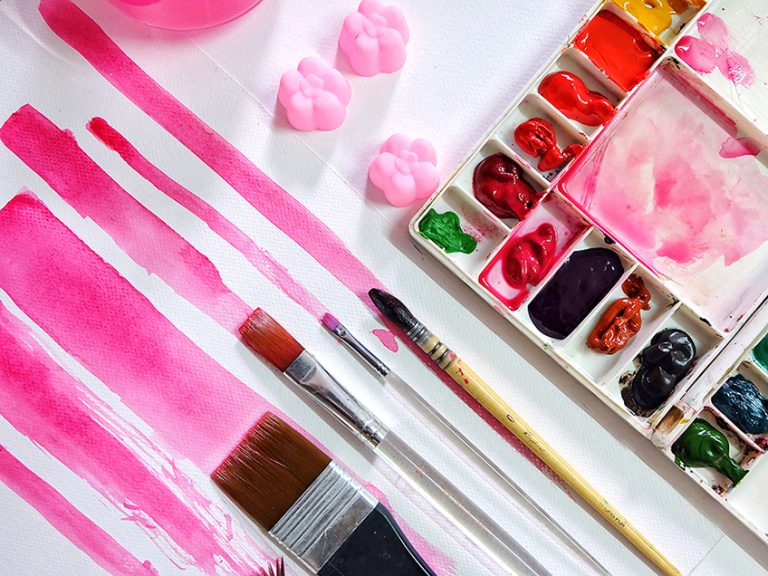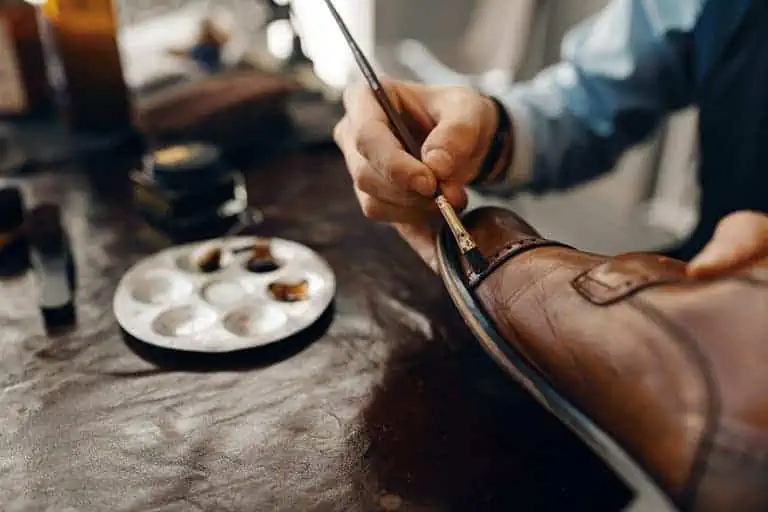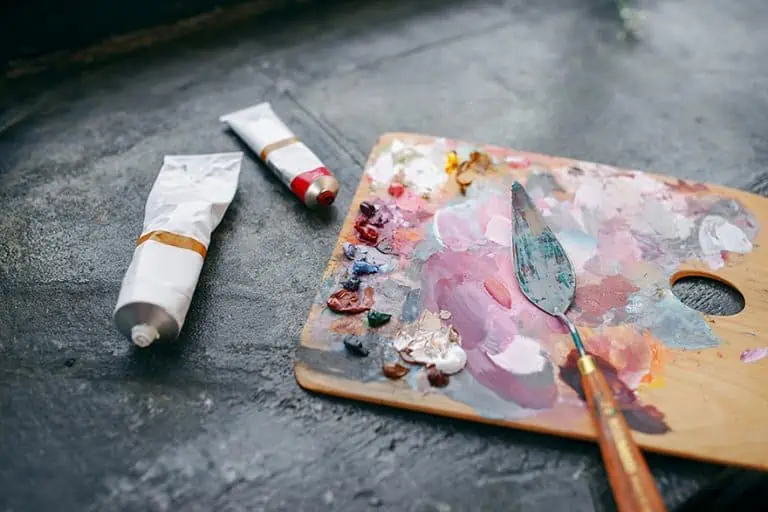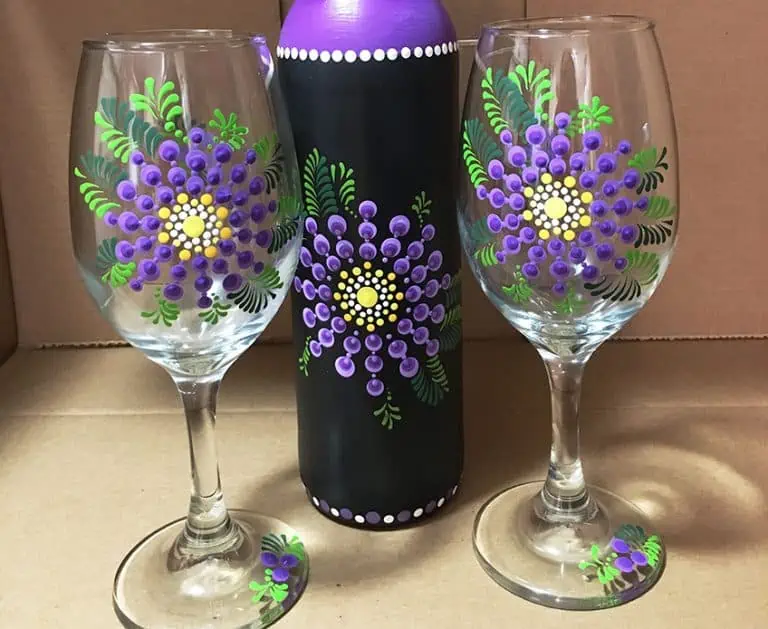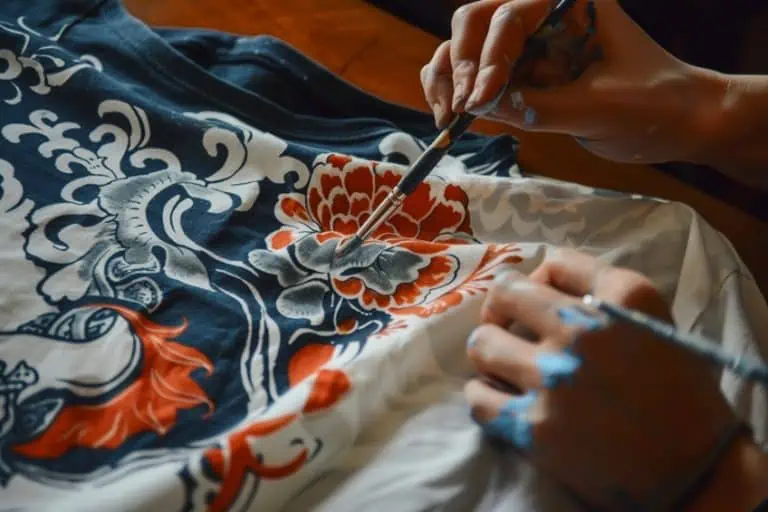What Is Gesso? – Everything There Is to Know About Gesso Primer
This post may contain affiliate links. We may earn a small commission from purchases made through them, at no additional cost to you.
When we think of painting supplies, very few people think of gesso. Gesso is a vital step that should be incorporated into your painting regime. Now, naturally, the first questions that come to mind when hearing the word gesso, are, what is gesso, why do I need it, and what is gesso used for? Gesso is one of those anonymous items that belong in the painting world that we didn’t even realize is needed. As we navigate through this article we will answer your questions, such as “what is gesso?” and “where to buy gesso?” Let us get started!
Table of Contents
What Is Gesso?
The word gesso certainly does not give us an idea of what it is we are talking about, so naturally, the first few questions raised will be, what is gesso, how to gesso a canvas, and what is gesso used for?
Gesso has an absorbent quality that prevents the paint from bleeding, mainly on canvases. It is a primer painted onto canvas or other surfaces where bleeding or seeping may occur. Before you choose to start a painting on an untreated surface, naturally, a suitable primer must be applied to the surface. The purpose of applying a primer to certain surfaces is to prevent your paint from soaking into the weave of the material or canvas, this then answers the question of what is gesso in simple terms. Gesso can also be used to prepare other surfaces, like wood, to create a smoother base for your artistic creations.

What Is Gesso Made From?
Gesso was originally made up of a mixture of chalk and glue. The word gesso means chalk in Italian. The gesso manufactured today is a bright white mixture. This mixture is created with acrylic polymer medium and calcium carbonate. This is then applied on canvas, panels, or even some heavyweight paper. The plaster or chalk component of gesso primer makes it absorbent.
Once the paint is applied to a surface prepared with gesso primer, the moisture of the paint does not seep into the material resulting in the paint bleeding.
The Different Types of Gesso
When visiting your art supply store, you may feel a little confused. Acrylic gesso is available in three different grades. These include studio grade gesso, artist grade gesso, and professional grade gesso. The different grades have varying amounts of concentrated gesso in a formula. The professional grade gesso is very concentrated and it is recommended that it is thinned down with water before applying to get the best results. The artist-grade gesso prime is slightly less concentrated than the professional grade. The student grade gesso is the gesso primer ready to use straight out of the container without first having to dilute it. You will notice that student grade gesso is only available in white.

The texture and consistency of gesso primer vary from brand to brand. Whilst some brands seem runnier than others, when applying the gesso to canvas, the texture will change from a very smooth to a more textured feel. Do not feel shy to experiment with different brands of gesso. This will help you find the one that best suits your needs.
Gesso primer was sold only in white but it’s possible to purchase black, clear, and colored gesso which is readymade. If you want to make your colored gesso primer just add a little acrylic paint to the gesso and you will have tinted gesso primer ready to use. The gesso primer is sold in squeeze bottles or large jars. If using the squeeze bottles, the gesso can be squeezed directly onto the canvas before painting with a paintbrush. If using the jar, simply dip the paintbrush into it and paint the canvas. Check the consistency of the gesso before you apply it to your canvas. To make life easier, gesso primer is also available as a spray.
So, what is gesso spray? It is a primer in a can that you shake before use and sprays the canvas from top to bottom from right to left. There is no need for a paintbrush.
Gesso vs. Acrylic Paint
Whilst gesso is very similar to acrylic paint, it is not only much thinner but a lot cheaper. When it dries, the gesso will dry hard and the surface will feel stiffer. Gesso is used to prime a surface so that it is ready to paint without the paint being able to soak into the canvas or surface.

Painting With Acrylic Paints
The modern acrylic gesso is a combination of calcium carbonate or chalk and acrylic polymer, which is a binder, and the pigment is white. Other chemicals added to the mixture ensure flexibility and the long life of the mixture. Technically, you won’t need to use the gesso primer to the canvas before painting with acrylic paints but often it is found that if you do paint directly onto a raw canvas that has not been treated, it could be a costly exercise as the paint will seep directly into the canvas and the painting will be destroyed.
A large number of artists enjoy using diluted acrylic paint to stain an untreated canvas, which will then become the stain that will form the background of their painting.
Acrylic Gesso
The acrylic gesso is a white pigment mixture combined with a filler and an acrylic resin dispersed in water. The acrylic gesso produces a soft, non-absorbent surface when applied. The acrylic gesso can contain calcium carbonate to increase the absorbency as titanium dioxide is the whitening agent in the gesso. Gesso primer is sold pre-mixed and is available in various sizes. Acrylic gesso is predominantly white but colored gesso can be purchased as well. The acrylic gesso leaves a slight smell when applied as it contains ammonia and formaldehyde. The acrylic gesso is non-absorbent.

Gesso Application
The gesso primer is quite stiff; therefore, it needs to be diluted with either water or paint thinners for the smoothest application. The gesso primer is what we would call a modeling past when it is applied in heavy amounts to enable the artist to work on a surface. Three coats of gesso primer are always recommended but allowing the gesso primer to dry before applying the next coat is key. The stiff formula in the gesso primer also acts as a great way to add texture to paintings such as landscapes.
If you want to add additional texture to the painting, then using a palette knife to apply the undiluted gesso primer will give the best results.
When to Apply Gesso
There are many different primes in the marketplace but if you are painting with acrylic or oil, the lessor primer will be your best option. The calcium carbonate mixture in the gesso primer along with the acrylic polymer medium is designed to go hand in hand with each other, to help absorb those materials for the best color application.
Now that we know just a little more about gesso, the question of what is gesso now becomes an adventure because it is a product that all art studios should have displayed on their shelves. It is recommended to prime a pre-stretched and store-bought canvas with a few layers of gesso primer before starting a painting even though the canvas may already have been primed. Working with gesso primer on every canvas will help retighten the surface and the gesso primer will also brighten up the background of your painting.

How to Apply Gesso
Learning how to apply gesso is easy. There are two techniques when applying gesso on canvas or paper. Gesso primer can be sprayed onto the surface or it can be painted on with a brush. We remind you about your question about what is gesso and reiterate that it is a primer that absorbs layers of paint without bleeding on the surface. Oil can easily be absorbed into a canvas if oil paints are your preferred choice when painting. Gesso primer will eliminate those pesky oil runs from the paint.
The gesso primer will allow the surface to be painted without anything soaking into the material, which can damage the painting or even cause severe damage as time goes by. The first step in the application of your gesso primer will be combing the acrylic gesso with a small amount of water.
This helps the gesso primer glide along the surface when painted. Next, coat the paintbrush by dunking it into the diluted primer and simply apply it to your entire canvas or surface. We suggest that you apply at least three coats of gesso primer onto your surface of choice. You will also want to apply the separate coats of gesso primer in the opposite direction to the previous dried coat. There should be drying times between each layer being painted. Once the three coats have been applied to the surface, lightly sandpaper the surface with fine-grit sandpaper until the entire surface is smooth. The surface should then be wiped off with a clean dry cloth to remove any dust left from the sanding.
How to Gesso a Canvas
Gesso priming to canvas is easy. Use a wide flat clean paintbrush to apply the primer. Bigger surfaces needing to be covered will require larger paintbrushes. Dunk your paintbrush into the gesso bottle or jar and then simply paint it onto the canvas in one direction. Ensure that the entire surface is painted with the gesso. It is hard to make a mistake when priming gesso on canvas. The consistency of the gesso you want to use can be thinned out by diluting water into the mixture. If you want to create a smoother layer, try thinning down the gesso primer with water.
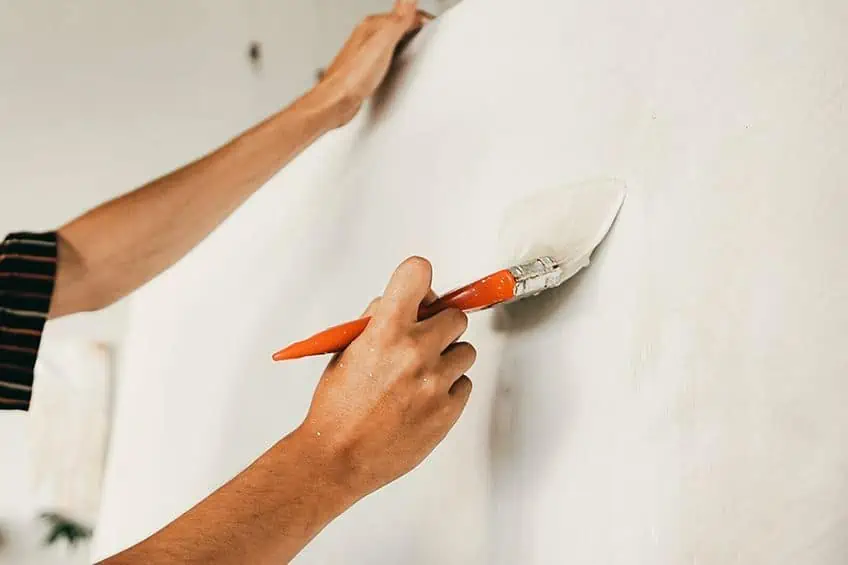
If you want a smooth canvas to paint on after applying gesso primer, paint over the surface at least three times. Layers should be applied after drying time. Sometimes the brush that you use may leave hairs on the canvas, this is easily removed by using a dry paintbrush to remove any hairs or even to smooth out any bumps that may occur while applying the gesso on the canvas. To ensure a smooth finish on the canvas, after the three coats of primer have been painted on and dried, sand the entire surface lightly with sandpaper. You should also wipe the surface using a dry cloth to remove any dust. Mixing the gesso primer with colored acrylic paint will give you a tinted gesso primer. This can act as your background color. Mixing the gesso primer with a textured gel will create almost a paste-like substance that can add texture to the painting.
Painting a Canvas That Is Already Pre-Primed
Most of the canvases that you buy in arts and craft shops have already been pre-primed, this means that you can start painting with acrylics as soon as you get home, however, you may think that the canvas lacks a bit of absorbency. The way to test whether a canvas lacks absorbency is simply by painting a corner of the canvas. If the paint sinks into the weave of the canvas that it may be a good idea to paint the canvas with the gesso primer.
Whilst the majority of canvasses in the shops are pre-primed, the decision to add an extra layer of protection is entirely up to you.
Making Your Own Gesso
Whilst gesso is so easily available in the shops and even though the majority of canvases have been pre-primed you may want to experiment a little by making your gesso. It is possible and the steps to follow are relatively simple to follow. Attempting to make your gesso will allow you to learn to alter the consistency for your next projects, which will enhance the unique finish of the art piece. The materials that you will need are:
- PVA-size Golden GAC100 or Golden GAC400
- Chalk dust
- Sandpaper (400-grit is fine)
Instructions
- Add one layer of the PVA size to the substrate and let it dry. You will know it is dry when it feels cold.
- Combine one-part PVA size and one-part chalk dust together. The chalk that is purchased must be fine.
- Add equal parts PVA size and chalk mixture to the substrate and let that dry.

- If you prefer an opaquer base, further mixing is not required but for those who require a thicker texture, simply combine one-part PVA size and two parts chalk and add a layer to your substrate. Once again, allow it to fully dry.
- Continue adding layers of the above-mentioned two-to-one mixture until you are happy with both the thickness, as well as the whiteness.
- When you are finished, add the layers and when dry, rub the gesso with the sandpaper until smooth.
The world of art is full of majestic colors, tools, and methods. As such, it can be quite daunting to the artist just starting on this exciting adventure. There are so many different things to consider if painting becomes the art of choice when putting your emotions on canvas but we are confident that with the basic information we have shared with you in this article where we describe in more detail, what gesso is, the journey will be a lot more exciting than daunting. Now the only thing left to do is put the question of what is gesso aside, and get started on your next painting project!
Frequently Asked Questions
What Is Gesso?
Gesso is an important art supply that should be on the top shelf of your art room or studio. Gesso primer is what will help you to get your canvas ready for painting. The gesso primer sold in arts and crafts shops looks very similar to the white acrylic paint but it is thinner. After painting the surface with gesso primer and waiting for the required drying time, you will notice that the surface becomes hard and stiff. Gesso prepares the surface so that painting can take place on the surface without the paint bleeding through the material used.
Where Can I Buy Gesso?
All three varieties of gesso primer products are available in arts and craft shops and because of the popularity of art, especially among children, the product is now also becoming more available in big supermarkets as well.
What Is Gesso Used For?
It is not often that you will meet an artist that does not understand what gesso is. The wonderful thing about gesso is that you can apply it to almost any surface that you wish to paint! Once the gesso has dried, painting with acrylic paint becomes so much easier and almost effortless. Strangely, the thing that you thought could never be painted, such as your faded rubber ducks in the bath, the gnomes in the garden, and even vinyl records, can be painted with acryl as long as the gesso primer is applied to the surface. As far as your imagination can stretch, so too are the painting possibilities endless.
What Is Clear Gesso?
Clear gesso is a transparent gesso and when it dries it leaves a clear finish. The clear gesso provides the ideal type of finish when using chalk, graphite, charcoal, and pastel drawings. It will not change the color of the graphite used, and the colors will remain true.
What Else Can Gesso Be Used For?
Gesso primer is often used by sculptors to manipulate the shapes of their art or can use the gesso as a material when sculpting. Gesso can be used as a layer between sculpted wood and also the thin gold left that is so popular today. A layer of refined and colored clay is used to cover the gesso before applying the gold leaf. This product is available in red. Gesso can also be used to add tint to a color. It can be used as a whitewash layer over something that has already been painted. The gesso primer also gives a painting a matt finish. One of the best things about the gesso primer is that you can use it to cover up mistakes made in a painting. If a painting has been spoilt, there is no need to throw it away, just paint a few coats of gesso over the surface, and then once dried, you can commence with an entirely new painting.
Where to Buy Gesso?
You will find gesso in most reputable art stores, and since all artists use it, it’s likely to be sold at your local art supply store, even if it is a small-scale shop. Of course, purchasing your art supplies online is an even easier way to buy gesso, and you will likely find many different options to suit your budget.
In 2005, Charlene completed her wellness degrees in therapeutic aromatherapy and reflexology at the International School of Reflexology and Meridian Therapy. She worked for a company offering corporate wellness programs for several years before opening her own therapy practice. In 2015, she was asked by a digital marketer friend to join her company as a content creator, and it was here that she discovered her enthusiasm for writing. Since entering the world of content creation, she has gained a lot of experience over the years writing about various topics such as beauty, health, wellness, travel, crafting, and much more. Due to various circumstances, she had to give up her therapy practice and now works as a freelance writer. Since she is a very creative person and as a balance to writing likes to be active in various areas of art and crafts, the activity at acrylgiessen.com is perfect for her to contribute their knowledge and experience in various creative topics.
Learn more about Charlene Lewis and about us.



